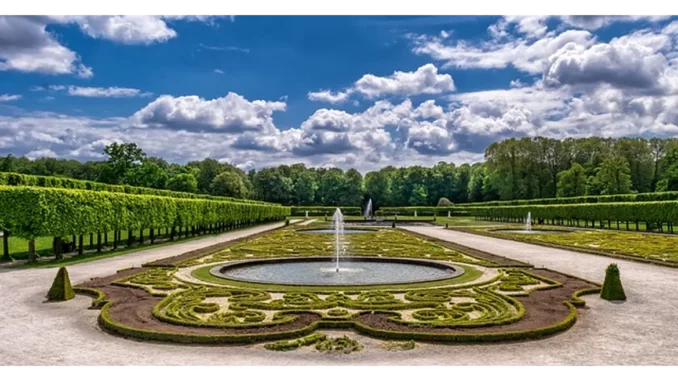
Crafting a Captivating Garden: Expert Tips for Thoughtful Plant Selection and Design
Your vision, we build and you enjoyElegancia.homes handles every step in conservatory creation.
Creating a garden that enchants at first glance is a subtle art, one that transcends the mere selection of attractive flora. It involves weaving a cohesive tapestry that mirrors your personal style, complements the environment, and offers perennial allure. Here, we delve into the pivotal steps for plant selection and garden design, with a focus on making an indelible first impression through meticulous plant choices and strategic layout.
Comprehending Your Garden’s Unique Identity
Before embarking on your journey of plant selection, it is imperative to develop a clear understanding of your garden’s distinct characteristics. This foundational insight ensures your garden not only survives but thrives.
1. Exacting Measurements: Begin by measuring the precise dimensions of your garden. This essential step assists in planning the layout and ascertaining the number of plants your space can accommodate. Consider both horizontal expanses and vertical opportunities—such as trellises for climbing vines or tall perennials—to introduce height and depth.
2. In-Depth Soil Analysis: Undertake a thorough soil analysis to decipher the pH levels and nutrient composition. Such knowledge is crucial for selecting plants that are aligned with your garden’s soil conditions. The texture of the soil, whether clay, sandy, or loamy, significantly influences plant growth and must be factored into your choices.
3. Sunlight and Shade Dynamics: Observe the interplay of sunlight and shade within your garden over the course of a day. Different plants have diverse light requirements, and understanding these patterns is vital for placing the right plant in the right spot.
Selecting the Ideal Plants
The selection of plants is a cornerstone of creating a captivating garden. Consider these expert tips to refine your plant selection process:
1. Plant Hardiness and Climate Compatibility: Opt for plants that are adeptly suited to your climate zone. Hardy varieties are more resilient, requiring less maintenance and contributing to a robust garden.
2. Embracing Native and Drought-Resistant Varieties: Integrate native and drought-tolerant plants into your design. These plants are naturally adapted to local conditions, often necessitating less water and care, thus offering a sustainable choice.
3. Ensuring Seasonal Appeal: Choose plants that provide visual intrigue across the seasons. From spring bulbs and summer perennials to autumnal foliage and winter evergreens, a diverse selection ensures your garden remains vibrant throughout the year.
4. Harmonious Plant Combinations: Experiment with plant pairings to achieve striking visual effects. Combine plants with complementary colours, contrasting textures, or varying heights to add depth and interest. Consider partnerships such as roses with salvia or hostas with astilbe for arresting displays.
Designing the Garden Layout
A thoughtfully designed layout amplifies the allure of your plants, crafting a cohesive and inviting space. Here are some design principles to enrich your garden:
1. Colour Schemes and the Colour Wheel: Employ the colour wheel as a guide to develop harmonious schemes. Whether you favour a monochromatic approach or a vibrant mix, the colour wheel can assist in achieving the desired visual impact.
2. Dramatic Mass Planting: Grouping plants in clusters or drifts creates a dramatic, eye-catching effect. Utilise odd numbers, such as trios or quintets, for a natural and appealing arrangement.
3. Foliage and Texture Considerations: The significance of foliage and texture in garden design cannot be overstated. Plants with interesting leaf shapes, colours, and textures add dimension and intrigue, even beyond the flowering season.
4. Layering and Verticality: Introduce layers and vertical elements to infuse height and depth into your garden. Taller plants can act as focal points or backdrops, while shorter varieties populate the foreground. Trellises, arbours, or climbing plants can add vertical charm.
5. Pathways and Focal Points: Design pathways and focal points to guide visitors and accentuate key areas. Consider materials like gravel, stone, or mulch for pathways, and introduce features such as benches, sculptures, or water elements as focal points.
Sustaining Your Garden’s Beauty
Once your garden is realised, regular maintenance is key to preserving its splendour. Here are expert tips for maintaining a thriving garden:
1. Efficient Watering and Irrigation: Ensure your garden receives sufficient hydration, particularly during dry spells. Consider installing an irrigation system or applying mulch to conserve moisture and minimise watering frequency.
2. Pruning and Deadheading Practices: Regular pruning and deadheading promote healthy growth and extended blooming periods. Remove any dead or diseased foliage to avert pest or disease proliferation.
3. Nutrient Enrichment: Regularly fertilise and amend the soil to nurture your plants. Utilise organic fertilisers and compost to enrich the soil and support robust plant growth.
4. Vigilance Against Pests and Diseases: Stay alert for signs of pests or diseases, addressing issues promptly. Employ natural pest control methods or consult with a gardening expert for guidance on managing typical garden challenges.
By comprehensively understanding your garden space, selecting suitable plants, and employing thoughtful design principles, you can create a garden that leaves a lasting impression. Whether you are beginning anew or enhancing an existing space, these insights will help you craft an environment that reflects your style and provides enduring beauty and enjoyment.


Be the first to comment